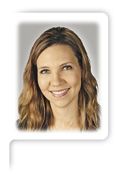Article
Have you considered using a scribe in your practice?
"Before the scribe, I spent 2 to 3 hours each evening and from 6 to 10 hours on a weekend catching up with notes in the computer. Now, I probably spend no more than an hour a day."

Dr. Radolinski“We’ve talked about it, but haven’t seriously investigated the option yet.
With urologists retiring and our work force declining in the future, it seems possible we may have to see more patients than we can at our current pace. A scribe would help us do the job that’s most important-make decisions on medical care-and spend less time on mundane details of plugging data into an EMR. It may allow us to increase efficiency, to become more facile at seeing more patients, or at least provide more time to patients we do see.
Currently, our practice works okay with each of us entering our own data into the EMR. The iPad is pretty unobtrusive; it sits on my lap. I can call up any information I need, but that works only as well as the iPad does. If it shuts down, then it becomes the elephant in the room and you can’t do much until it’s sorted out.
If patient loads continue to grow, pressure will be on physicians, especially specialists, to focus their attention on making clinical decisions regarding patient care rather than superfluous things like entering data. That’s why you see an increase in mid-level providers in specialties, so physicians can clarify the data and do what they’re trained to do.
The EMR tends to be less intrusive than the physician taking notes on paper, but not having anything in hand would certainly allow you to have a more natural conversation.”
Bart Radolinski, MD
Bethesda, MD
Continue to the next page for additional responses.

Dr. Beam“We are a group of 35 urologists and urogynecologists. Three of us are taking part in a scribe pilot program. We use a professional scribe service-primarily college-educated premed, pre-dental students. We’re several weeks in and I can tell you, it didn’t take more than a day to figure out this is a good thing.
It takes the focus away from the computer and puts it back on the patient. We weren’t sure how patients would receive it, but I can tell you that 99% of the time it is perceived very favorably. The patient and provider seem to forget the scribe is in the room almost immediately. We offer patients the option of the scribe stepping out of the room during an exam, but most are fine with her just turning her back. We can maintain eye contact, basically practicing medicine the way we used to, before computers took over. Several patients have other MDs who use a scribe. They like it because the MD pays full attention to them, NOT the computer.
It’s also much more efficient. Before the scribe, I spent 2 to 3 hours each evening and from 6 to 10 hours on a weekend catching up with notes in the computer. Now, I probably spend no more than an hour a day. It basically gave me my life outside of medicine back. That was huge.
As the trial progresses, we have to see: Are we more efficient? Can we actually see more patients a day? I think the answer will be yes, but we still have to show that besides patients being more satisfied, and physicians who are definitely more satisfied, we have to see if it is economically feasible.”
Teresa D. Beam, MD
Indianapolis

Dr. Brantly“A couple of primary care doctors I work with use them and I’ve seen the pros and cons of using them. One thing I’ve heard is that after you see the patient and dictate the note, it reinforces what’s going on. When you don’t do that, you can have a hard time remembering what’s happening with the patient if you haven’t done the note yourself.
With budget cuts, our clinic hasn’t even really looked at the cost of scribes. We haven’t explored whether it would allow us to see enough patients to make it financially feasible.
If our clinic decided to go that way, I would definitely consider using the scribe. The only real drawback I could see is that you wouldn’t be as familiar with the patient’s information, and it might not be worded exactly the way you’d like it to be.”
Elisa Brantly, MD
San Angelo, TX
More "Speak Out"
What do you do to prevent post-prostate biopsy infection?
Are EHRs a help or hindrance to patient care?
Do follow the AUA's Choosing Wisely guidelines?
Subscribe to Urology Times to get monthly news from the leading news source for urologists.





